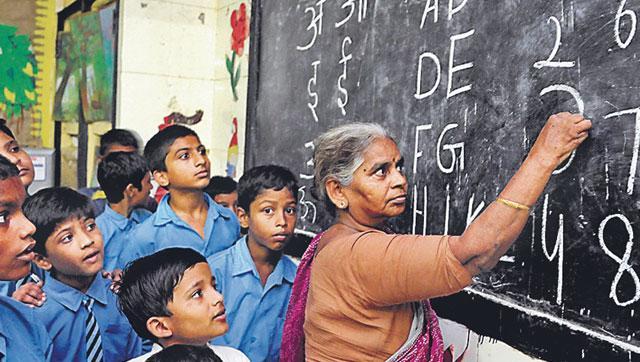
While living in the world of information technology, today the ‘connectivity’ is what really matters. People of all age groups, gender, caste, religion and regions have access to global connectivity through internet available in their handsets and computers. This is comparatively a new phenomenon as a decade ago; neither connectivity nor hardware availability was in common reach, however with the visionary ideas of successive governments, gradually the connectivity was introduced. This enhanced connectivity and enhanced availability of hardware affected various fields of development. When it comes to education, that is one of the core foundations of development, making people familiar with digital gadgets, computers becomes a primary need.
At a time when the world was working on laptops, many students in India were not even able to see how it looks like. They were unable to understand value of document storage in soft copies, e-books, soft note books and internet access. Having these was considered a privilege that could be entitled mostly by elites. Hardware (laptop/computer) was costly and a student could not afford to buy this on their own. Probably, by considering this need in Uttar Pradesh, It was the time when a political party named Samajwadi Party formed a new vision to remove this disparity. It is true that making an alignment with the time is what a wise decision should be and when it comes to ‘politics’, probably it should be more informed and visionary to take such decisions quickly.
In 2012, when the Samajwadi Party had brought a poll promise of laptop distribution to students with the aim to encourage them for higher education and remove disparity, the promise was very well received by people, particularly by youths. After forming the government, the party had distributed around 15 lacs laptops to students and it led the then U.P. Government of running world’s largest laptop distribution program. Socialism, as understood with its theoretical form encourages bringing equality. In India, where inequality exists in social and economic status of population; this inequality affects educational system where poor, marginalised and deprived students do not get same opportunity as accessed by rich. To make balance, various schemes were made time to time, from mid-day meals to right to education. However, only ensuring the attendance in class cannot be said sufficient until students also receive useful resources to help them in their studies and to help them move with the time and technology. Another uniqueness of the program was the inclusiveness where students of all approved education systems (state and central boards, Sanskrit education, Urdu education and technical courses) were considered to take benefits to avoid any discrimination among them on the basis of their education system. A laptop couldn’t convert the life overnight, but could certainly help these students to dream and to achieve all what they want to. Success of the scheme can be understood with the fact that similar scheme was conducted by many other states also and even the present BJP government in Uttar Pradesh carried it.
As per report of All India Higher Education Survey, In India, enrolment in higher education (around 25%) is much lower than many countries (China 43%, USA 85%) and hence there is a strong need to frame policies that may encourage students to study, develop interest and understanding and getting enrolled for higher education. These can be achieved through working on focused approach starting from bringing equality and quality in primary, matric and intermediate levels; providing resources to students and to facilitate them to dream. This may be followed with establishing more universities and colleges to accommodate more and more students. Facilitating students with laptops is not an imaginary or vague idea of equipping them towards education, but it also has proven research. A Michigan State University’s assistant professor researched in an educational institution about how distributing laptops to students can benefit their academics and found in its research results that students improved in various subjects and got opportunity to write, rewrite and edit their thoughts and answers. In many countries, students also have provisions to watch lectures of their teachers on laptops while at home. Laptops allow enhanced access to technology, increase networking with peers, and develop enthusiasm and makes learning more interesting.
Though the Samajwadi Government had initiated the useful project of laptop distribution and the present government continued it, there is greater need now to bring more benefits with it where subject lectures can be recorded and stored, free connectivity can be provided to access academic resources and schools may have their digital libraries access with students laptops to allow them to go through various books, notes, assignments etc. Moreover, beneficiaries should also include open schooling system students. The state government may also consider creating a centralised portal where lectures on subject topics and standard books can be provided free. Doing these would be a serious effort towards SDG4 as it states ‘Achieving inclusive and quality education for all reaffirms the belief that education is one of the most powerful and proven vehicles for sustainable development. It also aims to provide equal access to affordable vocational training, to eliminate gender and wealth disparities, and to achieve universal access to quality higher education.’
Ravi Nitesh is a Petroleum Engineer, Social Activist and Freelance Writer and tweets @ravinitesh